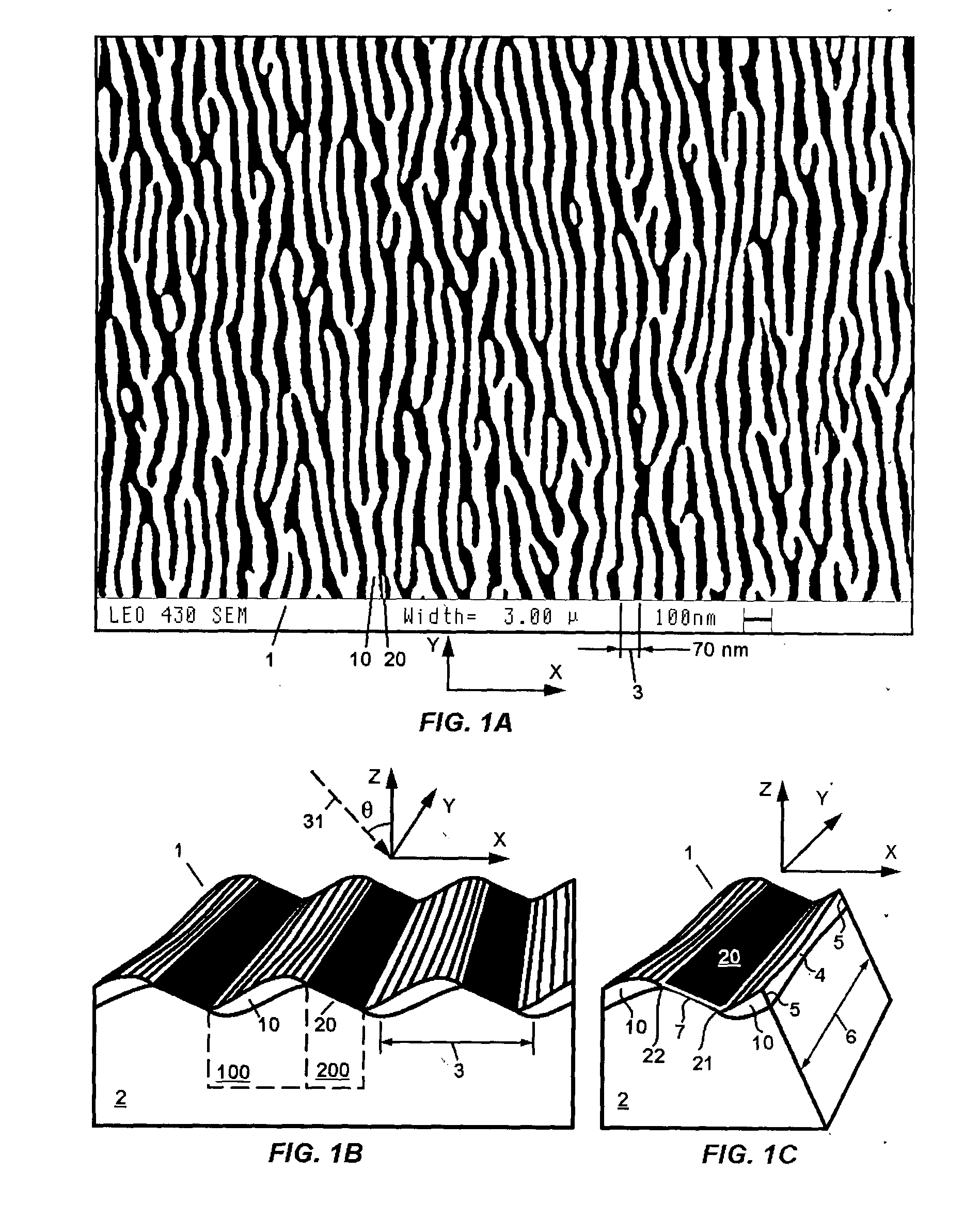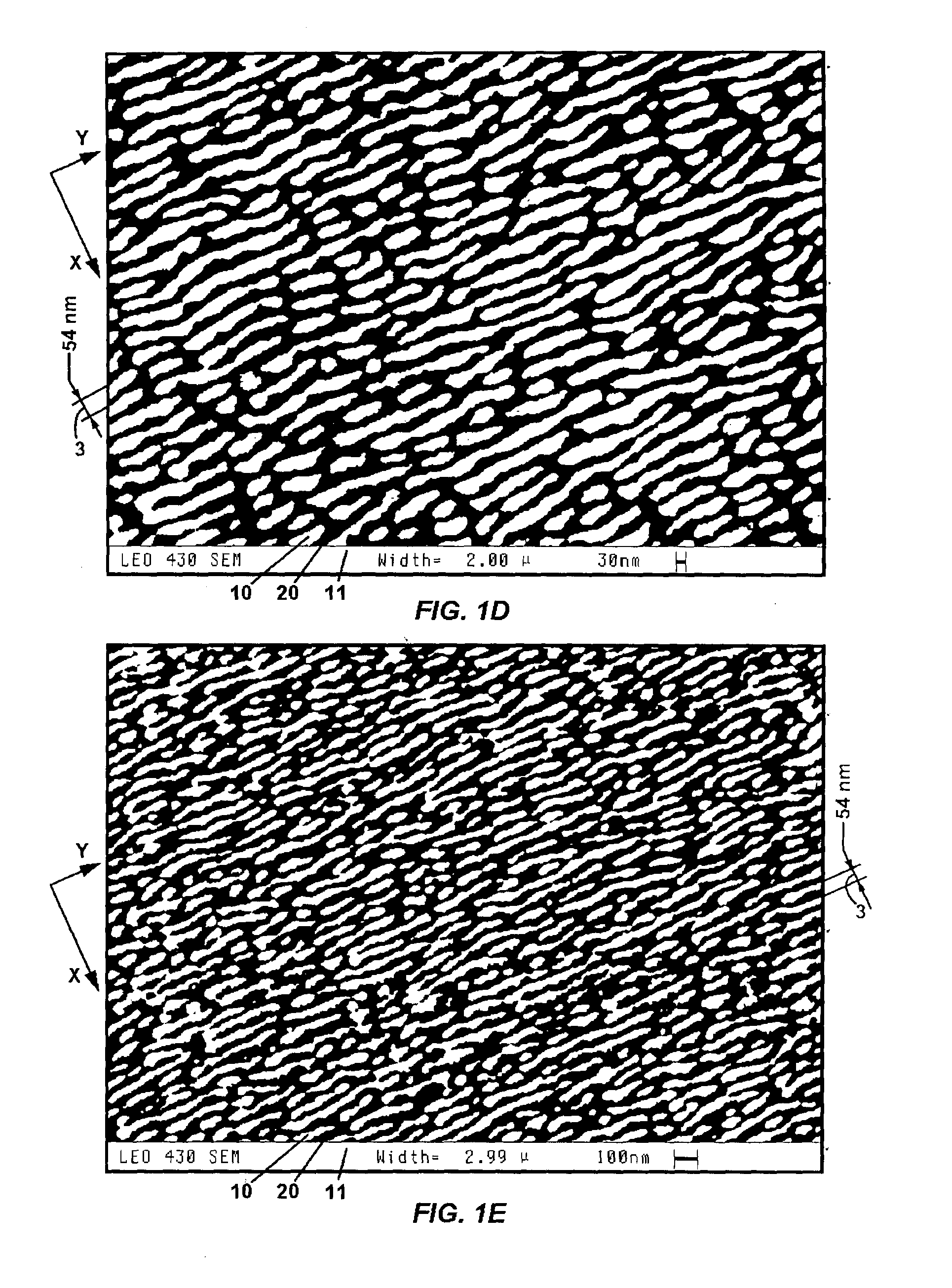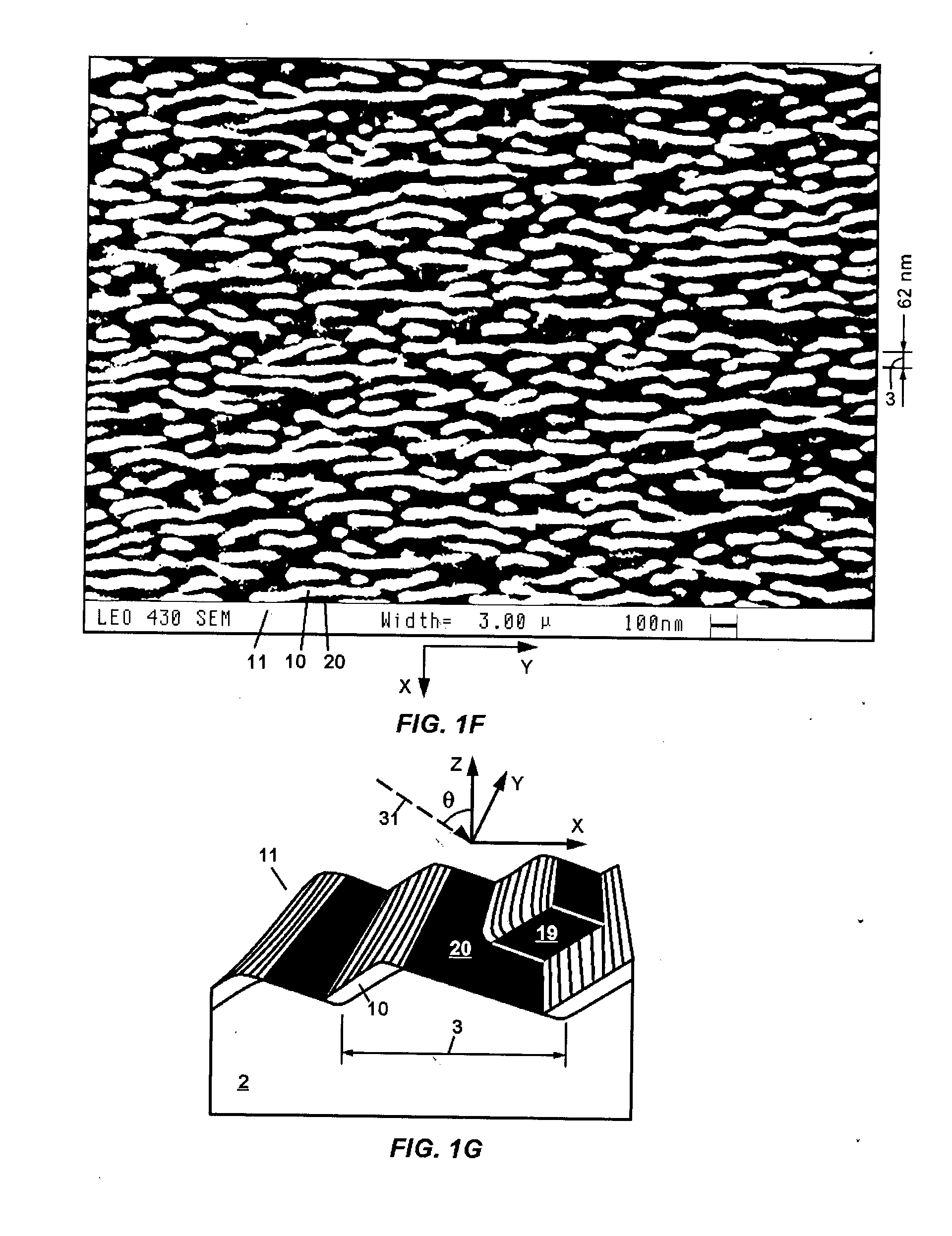Sers-sensor with nanostructured surface and methods of making and using
- Summary
- Abstract
- Description
- Claims
- Application Information
AI Technical Summary
Benefits of technology
Problems solved by technology
Method used
Image
Examples
Embodiment Construction
[0041]The invention relates to the field of optical sensors for detecting and measuring the traces of organic compounds by the method of Raman spectroscopy using the effect of surface enhanced Raman scattering (SERS). The invention also relates to the technology of forming nanostructured elements on the surface of substrates for optical sensors (SERS-sensors) for measuring Raman scattering signal from analyte molecules positioned on the nanostructured surface of the sensor.
[0042]For example, a SERS-sensor includes a substrate with a nanostructured surface. The nanostructured surface includes an array of ridge elements, which may be formed using a wavelike silicon nitride nanomask. This nanomask is self-formed during the irradiation of the silicon substrate surface by a beam of nitrogen ions. The nanomask is also self-formed during the irradiation of a silicon layer on the substrate surface by a beam of nitrogen ions. As a result of etching of the substrate through the nanomask a den...
PUM
 Login to view more
Login to view more Abstract
Description
Claims
Application Information
 Login to view more
Login to view more - R&D Engineer
- R&D Manager
- IP Professional
- Industry Leading Data Capabilities
- Powerful AI technology
- Patent DNA Extraction
Browse by: Latest US Patents, China's latest patents, Technical Efficacy Thesaurus, Application Domain, Technology Topic.
© 2024 PatSnap. All rights reserved.Legal|Privacy policy|Modern Slavery Act Transparency Statement|Sitemap



